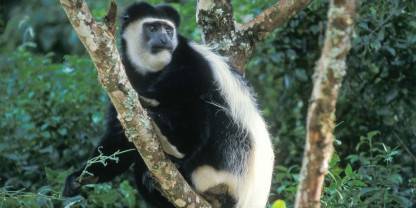Marsabit National Park is a rewarding birding destination, with around 300 species recorded. An odd feature of its birdlife is the presence of widespread forest species alongside those more normally associated with arid habitats. Vultures can usually be seen circling above Gof Sokorte Guda. The hooded vulture is most common, but you might also see Egyptian, Rüppell’s and white-backed vulture. Both crater lakes usually host a varied selection of waders and waterfowl. Just north of Marsabit, the black lava Dida Galgalla Desert is the best place to look for the Williams’s lark.
Birding Specials Treats for Avid Birders
(E) endemic = only lives in Kenya(NE) near-endemic = lives in Kenya and neighboring countries
- Abyssinian thrush
- African olive pigeon
- African paradise flycatcher [white morph]
- Bearded vulture
- Egyptian vulture
- Garganey
- Hartlaub’s turaco
- Heuglin’s bustard (NE)
- Lemon dove
- Little grebe
- Masked lark (NE)
- Mountain buzzard
- Peregrine falcon
- Purple heron
- Reichenow’s seedeater
- Somali bee-eater (NE)
- Somali courser
- Somali crow
- Somali ostrich
- Somali sparrow (NE)
- Southern pochard
- Vulturine guineafowl
- White-backed vulture
- Williams’s lark (E)
Best Time for Bird Watching
Any time of the year will be rewarding for birders visiting Marsabit. However, if possible, November and April should be avoided as the rains in these months may interfere with your plans. Most of the park’s specials are , so they can be spotted throughout the year. November to April sees the arrival of species.

